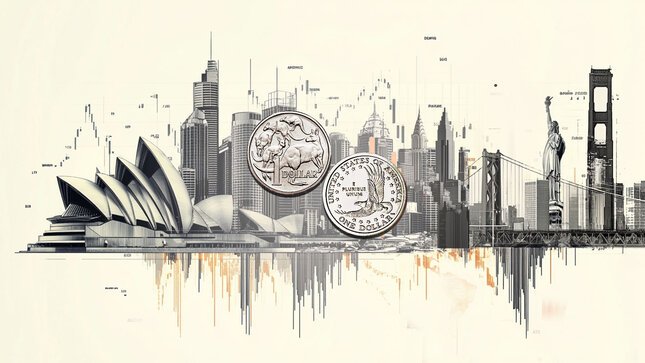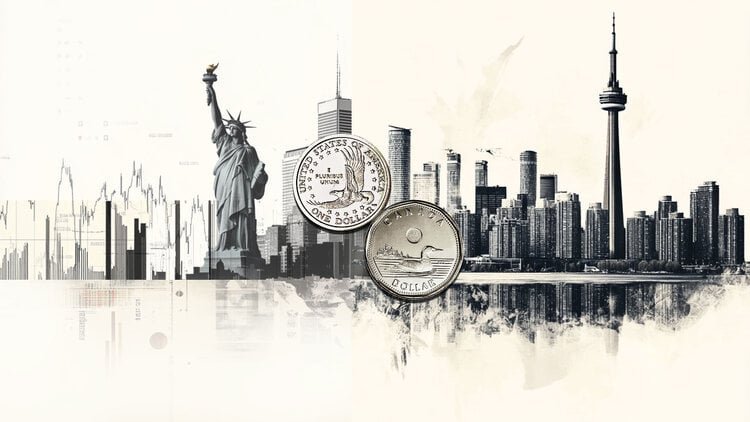The Australian Dollar (AUD) faces increasing selling pressure along with the rest of the broader risk complex on Wednesday, motivating AUD/USD to dispute the area of monthly lows around 0.6460 amid marked losses.
The steep pullback in spot comes on the back of the continuation of the march north in the US Dollar, lifting the US Dollar Index (DXY) to two-week highs around the psychological 100.00 barrier in a context of mixed US Treasury yields across the spectrum.
Australia: Holding steady, even if it’s not a boom
Australia’s economy isn’t exactly roaring, but it’s holding up better than many expected. The October PMIs were a mixed bag: Manufacturing dipped back under the 50 line to 49.7 (from 51.4), while Services inched higher to 53.1 (from 52.4).
Retail Sales posted a decent 1.2% rise in June, and the trade surplus widened to A$3.938 billion in September. Business investment also picked up in Q2, helping GDP grow 0.6% QoQ and 1.1% on a yearly basis. It’s not spectacular, but it’s solid enough to keep the wheels turning.
The labour market also added to the resilience narrative: October’s Unemployment Rate slipped to 4.3%, and Employment Change jumped +42.2K after a softer patch. It’s the kind of rebound that hints conditions may be firming again.
China: Still calling the shots
China remains the big swing factor for Australia, and the latest numbers show a recovery that’s still happening but not gaining pace.
Chinese GDP grew 4.0% YoY in Q3, while October Retail Sales climbed 2.9% from a year earlier. The RatingDog Manufacturing PMI eased to 50.6 and Services slipped to 52.6, suggesting some loss of momentum. Furthermore, Industrial Production missed expectations too, rising 4.9% over the last twelve months.
Trade data told a similar story, with the surplus narrowing from $103.33bn to $90.45bn in September. But inflation surprised a little on the upside: headline CPI rebounded to 0.2% YoY on holiday spending, beating forecasts and reversing September’s 0.3% fall. In addition, the core CPI firmed to 1.2%, matching its February high.
The People’s Bank of China (PBoC) kept its Loan Prime Rates (LPR) unchanged in October: 3.00% for the one-year and 3.50% for the five-year, matching consensus. On this, the November 20 meeting is widely seen as another steady outcome.
RBA: Comfortable on the sidelines
The Reserve Bank of Australia (RBA) kept rates unchanged at 3.60% for the second meeting in a row in early November, and no one was shocked. The tone remained calm and balanced, with no urgency to move policy either way.
The RBA acknowledged that inflation is still a touch sticky and that the labour market is fairly tight despite the uptick in unemployment. Governor Michele Bullock described policy as “pretty close to neutral,” signalling no immediate appetite for hikes or cuts.
She also highlighted that the 75 basis points of easing already delivered haven’t fully filtered through the economy yet. Policymakers want to see how demand evolves before taking another step.
Markets agree: There’s almost a 90% chance of no change at the December 9 meeting, and only around 7 basis points of easing priced in by the end of 2026.
The November Minutes added a bit more colour, pointing to three factors that would justify keeping rates steady: a stronger-than-expected rebound in demand, sticky inflation or lagging productivity, or the Board believing policy remains slightly restrictive.
On the flip side, they noted two conditions that could support more cuts: a meaningful softening in the labour market or households becoming notably more cautious with spending.
Technical picture
The near-term outlook for AUD/USD remains unclear for now and keeps pointing to the continuation of the sideline trade.
However, if the pair breaches below its key 200-day SMA at 0.6457, it could pave the way for extra losses to, initially, the October valley at 0.6440 (October 14), before the August floor at 0.6414 (August 21) and the June low of 0.6372 (June 23).
On the other hand, immediate resistance comes at the November top at 0.6580 (November 13), followed by the October high of 0.6629 (October 1). The continuation of the uptrend is expected to challenge the 2025 ceiling of 0.6707 (September 17) prior to the 2024 peak at 0.6942 (September 30) and the 0.7000 milestone.
Furthermore, momentum indicators reinforce the likelihood of extra losses in the near term: The Relative Strength Index (RSI) weakens to the 42 region, while the Average Directional Index (ADX) around 12 indicates a still fragile trend.
-1763570347128-1763570347129.png&w=1536&q=95)
The takeaway
AUD/USD is still stuck in its familiar 0.6400–0.6700 corridor. It’ll likely take a genuine catalyst to break that range: Stronger Chinese data, a meaningful shift from the Fed, a change in tone from the RBA, or a broader improvement in US–China sentiment.
US-China Trade War FAQs
Generally speaking, a trade war is an economic conflict between two or more countries due to extreme protectionism on one end. It implies the creation of trade barriers, such as tariffs, which result in counter-barriers, escalating import costs, and hence the cost of living.
An economic conflict between the United States (US) and China began early in 2018, when President Donald Trump set trade barriers on China, claiming unfair commercial practices and intellectual property theft from the Asian giant. China took retaliatory action, imposing tariffs on multiple US goods, such as automobiles and soybeans. Tensions escalated until the two countries signed the US-China Phase One trade deal in January 2020. The agreement required structural reforms and other changes to China’s economic and trade regime and pretended to restore stability and trust between the two nations. However, the Coronavirus pandemic took the focus out of the conflict. Yet, it is worth mentioning that President Joe Biden, who took office after Trump, kept tariffs in place and even added some additional levies.
The return of Donald Trump to the White House as the 47th US President has sparked a fresh wave of tensions between the two countries. During the 2024 election campaign, Trump pledged to impose 60% tariffs on China once he returned to office, which he did on January 20, 2025. With Trump back, the US-China trade war is meant to resume where it was left, with tit-for-tat policies affecting the global economic landscape amid disruptions in global supply chains, resulting in a reduction in spending, particularly investment, and directly feeding into the Consumer Price Index inflation.







